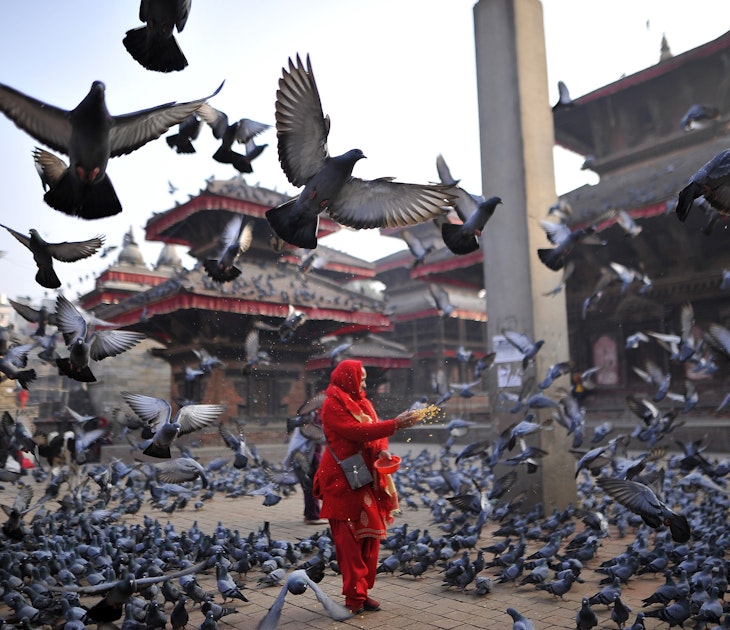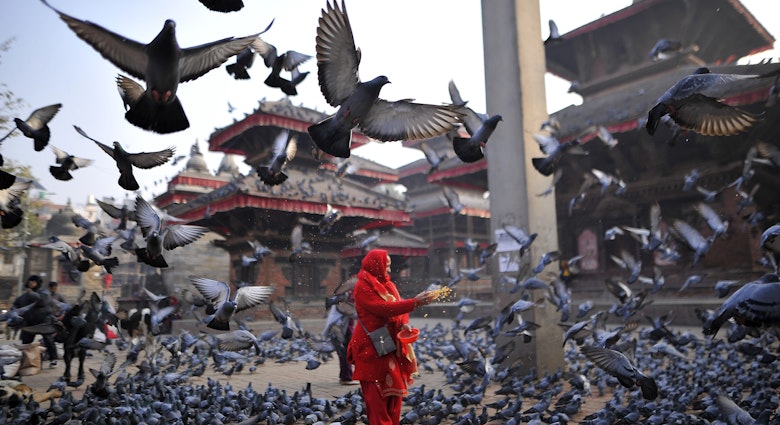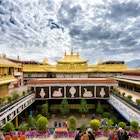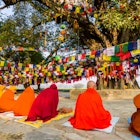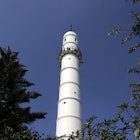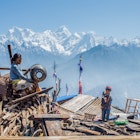Indra, the ancient Aryan god of rain, was once captured in the Kathmandu Valley while stealing a certain flower for his mother, Dagini. He was imprisoned until Dagini revealed his identity and his captors gladly released him.
The Indra Jatra festival celebrates this remarkable achievement (villagers don’t capture a real god every day of the week). In return for his release Dagini promised to spread dew over the crops for the coming months and to take back with her to heaven all those who had died in the past year.
The Indra Jatra festival thus honours the recently deceased and pays homage to Indra and Dagini for the coming harvests. It begins when a huge, carefully selected pole, carried via the Tundikhel (Kathmandu's parade ground), is erected outside the Hanuman Dhoka in Kathmandu. At the same time images and representations of Indra, usually as a captive, are displayed and sacrifices of goats and roosters are made; the screened doors obscuring the horrific face of Seto (White) Bhairab are also opened and for the next three days his gruesome visage will stare out at the proceedings.
The day before all this activity, three golden temple chariots are assembled in Basantapur Square, outside the home of the Kumari Bahal (a living goddess). In the afternoon, with Durbar Sq packed with colourful and cheerful crowds, two boys emerge from the Kumari’s house. They play the roles of Ganesh and Bhairab and will each ride in a chariot as an attendant to the goddess. Finally, the Kumari herself appears, either walking on a rolled-out carpet or carried by attendants so that her feet do not touch the ground.
The chariots move off and the Kumari is greeted from the balcony of the old palace by the president. The procession then continues out of Durbar Sq towards Hanuman Dhoka where it stops in front of the huge Seto Bhairab mask. The Kumari greets the image of Bhairab and then, with loud musical accompaniment, beer starts to pour from Bhairab’s mouth! Getting a sip of this beer is guaranteed to bring good fortune, but one lucky individual will also get the small fish that has been put into the beer – this brings especially good luck (though probably not for the fish).
Numerous other processions also take place around the town until the final day when the great pole is lowered and carried down to the river. A similar pole is erected in Bhaktapur as part of the Bisket Jatra Festival, celebrating the Nepali New Year.
More Info
Find information from Thorn Tree travellers about Indra Jatra, as well as FAQs about Nepal, India and Sri Lanka.
This excerpt was taken from the current Nepal guide.
